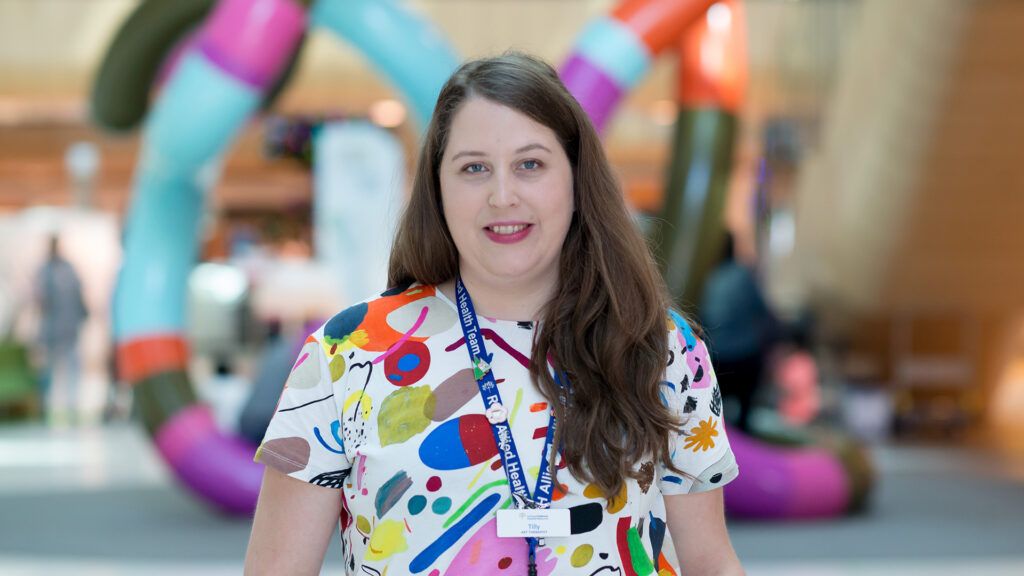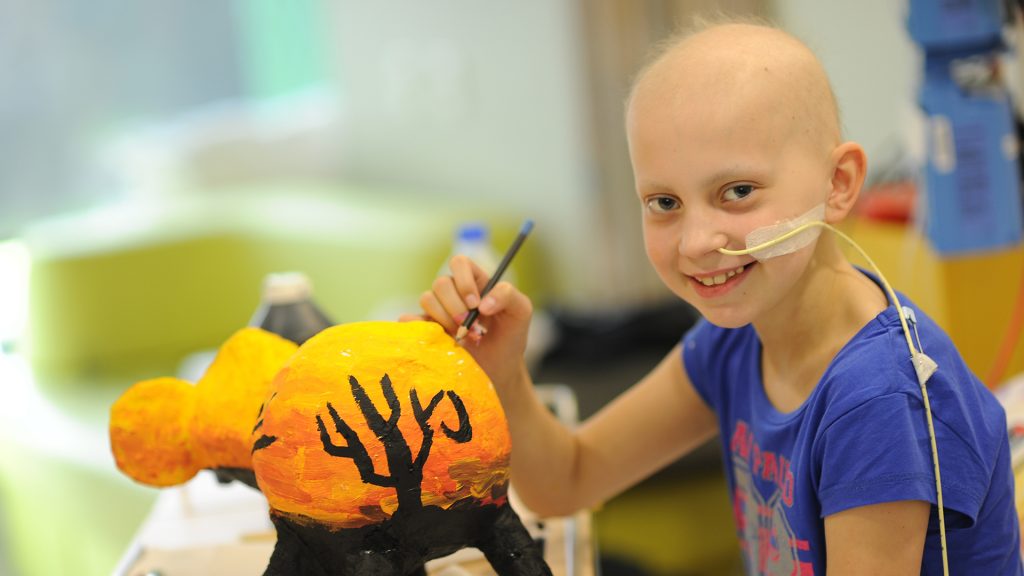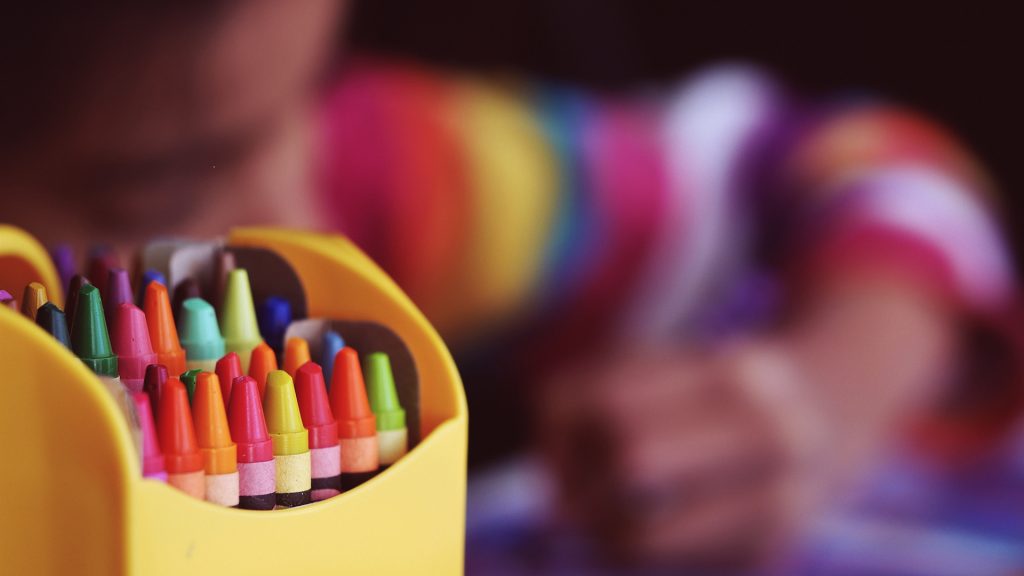The Art Therapy program within the Children’s Cancer Centre at The Royal Children’s Hospital has been funded by the Foundation (with assistance from The Pratt Foundation) since 2006, with funding close to $1.5 million awarded.
Using art as therapy can be a profoundly emotional experience for children in cancer treatment and is a space for children to process and make sense of some of the feelings they may experience that hospitalisation and illness, including sadness, confusion, isolation stir up.

Tell us something about yourself that not many people would know.
Tilly Dawson: I am a complete Harry Potter nerd who sits firmly in the Ravenclaw camp. When parents and adults find this out, I generally encounter an eye-roll or two, but with the kids, it’s usually very well received.
Who is your greatest visual or creative arts inspiration?
Tilly Dawson: Artist James Tyrell, whose background is in perceptual psychology, whose artwork deals with light, space and visual perception. Inspired by Tyrell, I have used a light box, paint and coloured transparencies here at the hospital to enable children to also play with light and space in their own artwork!
I dream of one day having works by Cy Twombly, Fiona Hall and Edith Rewa hanging on the walls of my house. These three artists each have unique styles; their artistic expressions are wonderful examples of the healing power of art.
What drew you to a career in Art Therapy?
Tilly Dawson: Creativity has always been a big part of my life, and I have always been inclined to look for an object’s creative potential. I have fond childhood memories of going to different stores with my parents, finding various household items and excitedly taking them home to turn them into abstract sculptures.
When I discovered I could pursue art in a therapeutic practice, it was a natural progression that led me to the profession. Add in a little bit of research during my Master of Art Therapy, and I was certain I wanted to pursue a career in the field.
What have you found unique about working with children with cancer at RCH?
Tilly Dawson: Art therapy here at RCH can get messy.. and that’s ok! As an art therapist for cancer patients my work here is to build strong relationships over time with each child so that they can seek control and choice within a safe space.
Art therapy for cancer patients has been proven to have multiple therapeutic benefits, and I have found this to be particularly true in impacting a child’s mood. The therapy allows children to explore their thoughts and to bridge the gap between tangible feelings and simply making a mess.

Art therapy is not about creating an aesthetically appealing product, or even a finished artwork. There is no interpretation of work by art therapists; all the interpretation to “create and destroy” is left to the children.
What changes have you seen over time in non-clinical therapies for childhood cancer patients?
Tilly Dawson: There is definitely better understanding from both parents and clinicians of what art therapy is and can be. Art therapy for cancer patients within RCH is beginning to take a more family-centred approach, moving away from being another “therapy”, to a therapeutic experience designed to build a positive connection with children.
I am very excited about the future application of Trauma-Informed Therapy, which utilises neurodevelopment and mind-body approaches in the application of art therapy and trauma informed care.
Are there any particularly memorable patients or families that have surprised or inspired your regular working day?

Tilly Dawson: I am lucky to be inspired by all the children I work with. One particular child’s engagement with the program always stays with me. Restricted to bed for long periods of time, this super high-energy patient really used painting and making to positively process the way they were feeling and the emotions they were experiencing being confined to the ward.
We formed a ‘healing relationship’ where my visits to the ward became an avenue to process. For me this child’s engagement with art therapy highlighted the rewards an individual can receive from this mode of therapy.
Any final thoughts to inspire current students to get involved specifically with art therapy?
Tilly Dawson: Being an Art Therapist requires flexible, quick thinking and openness in often slow and quiet work. I’d encourage anyone considering a career in the field to find an avenue of art therapy that they are passionate about and stay connected to their own artistic passions.
Photo Credit: photo by RCH Melbourne, Creative Studio
Tilly Dawson works as an Art Therapist at The Royal Children’s Hospital Melbourne. She holds a Bachelor of Social Science (Psychology), and a Masters of Art Therapy.